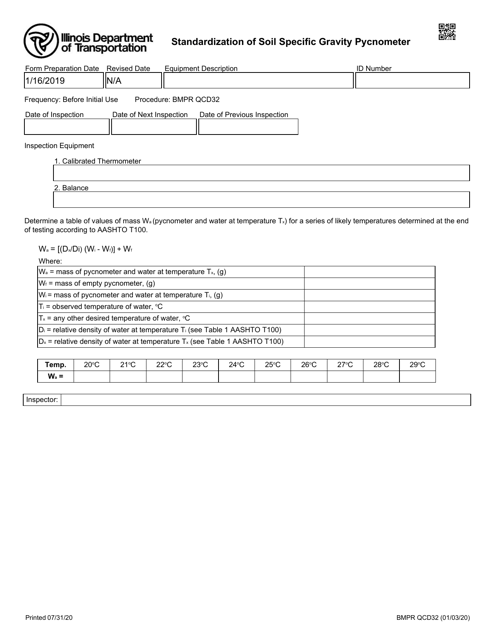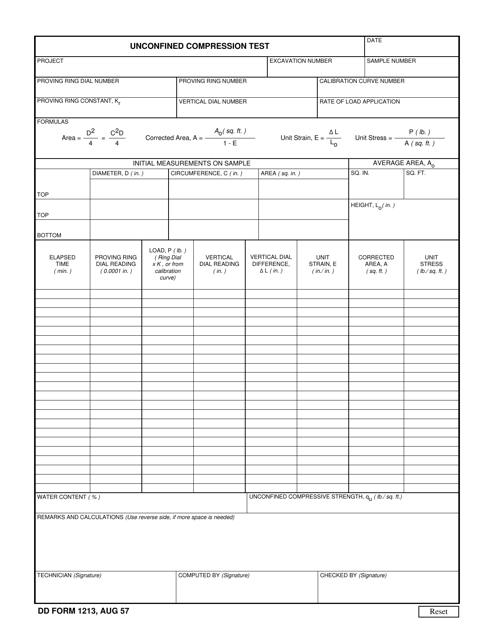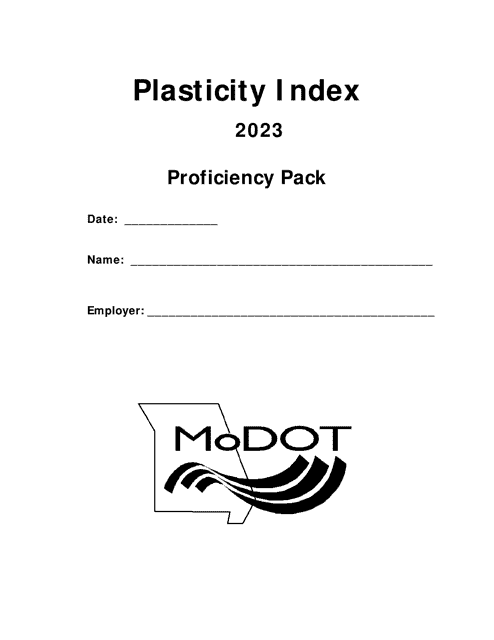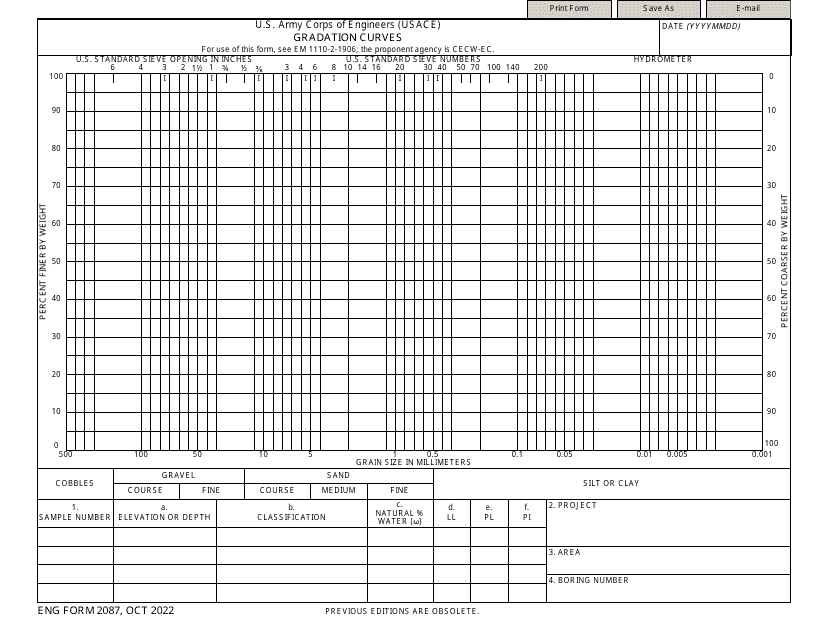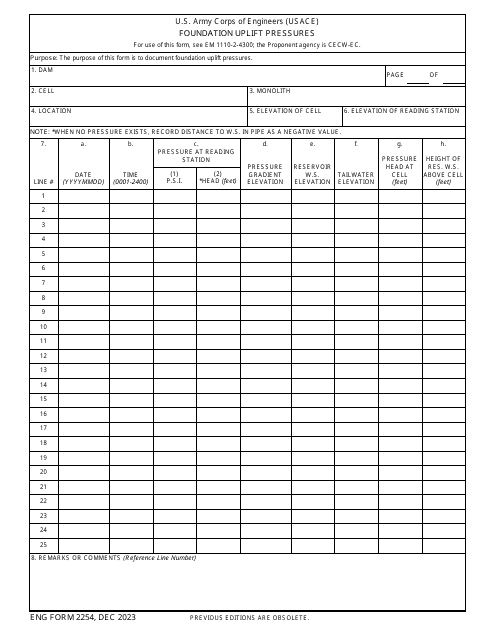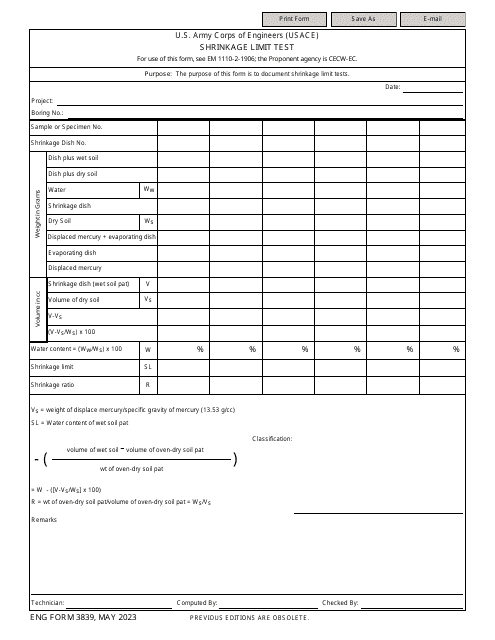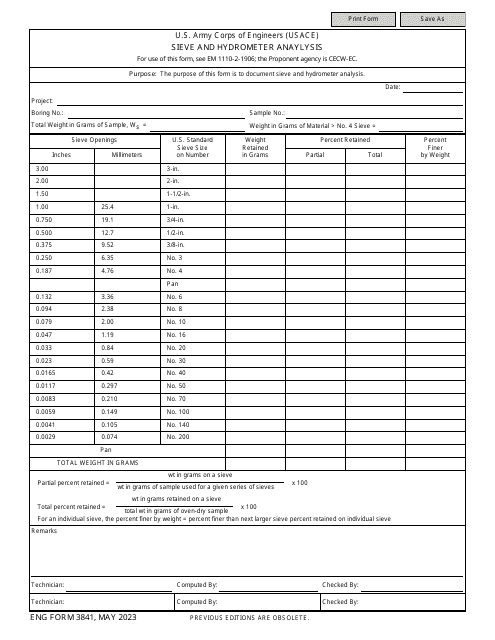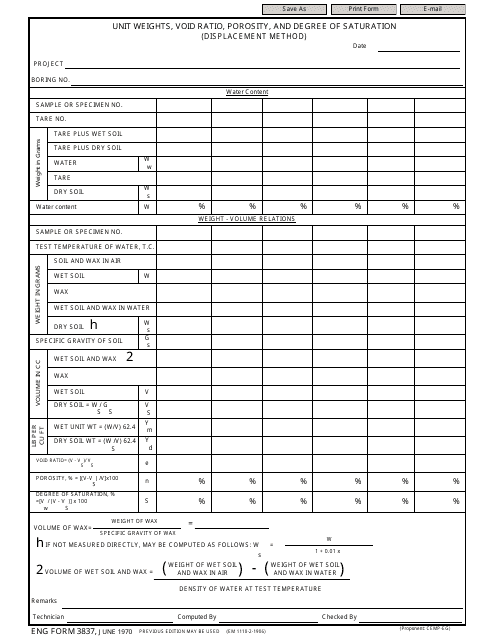Soil Mechanics Templates
Soil Mechanics is a crucial area of study in civil engineering and geotechnical engineering. It involves understanding the behavior of soil and its properties in order to design and construct safe and stable structures. In the field of soil mechanics, a wide range of documents and tests are conducted to evaluate the characteristics and behavior of soil.
One such document is the "Evaluation of Geotextile Material - New York," which focuses on the performance and effectiveness of geotextile materials in soil stabilization and erosion control. Geotextiles play a vital role in various civil engineering projects, such as road construction, retaining wall design, and landfill management.
Another important document is the "DD Form 1213 Unconfined Compression Test," which is used to determine the unconfined compressive strength of soil samples. This test is significant in assessing the stability and load-bearing capacity of the soil, particularly in foundation design and slope stability analysis.
The "ENG Form 2087 Gradation Curves" provides valuable information on the particle size distribution of soil. It helps engineers understand the soil's composition and its suitability for various engineering applications, such as filter design, drainage system design, and soil compaction.
Understanding the shrinkage characteristics of soil is essential in construction projects. The "ENG Form 3839 Shrinkage Limit Test" analyzes the soil's ability to shrink and swell due to changes in moisture content. This document aids engineers in designing appropriate moisture control measures to prevent soil-related problems, such as foundation settlement and crack formation.
The "ENG Form 3837 Unit Weights, Void Ratio, Porosity, and Degree of Saturation (Displacement Method)" is another valuable document that provides engineers with information on the physical properties of soil. It helps determine important parameters like unit weight, void ratio, porosity, and degree of saturation, which are crucial in the design of earth structures, such as embankments and retaining walls.
In summary, the field of soil mechanics encompasses a diverse range of documents and tests that are essential for understanding soil behavior and designing safe and stable structures. These documents, including the Evaluation of Geotextile Material, Unconfined Compression Test, Gradation Curves, Shrinkage Limit Test, and Unit Weights, provide engineers with valuable insights into soil properties, allowing them to make informed decisions in their engineering projects.
Documents:
9
This form is used for the standardization of a soil specific gravity pycnometer in Illinois.
This document provides an evaluation of geotextile material used in construction projects in New York. It assesses the performance and effectiveness of geotextiles in various applications such as drainage, erosion control, and soil stabilization.
This document is used for conducting an unconfined compression test.
This document provides a proficiency pack for assessing the plasticity index in soil testing, specifically designed for Missouri.

